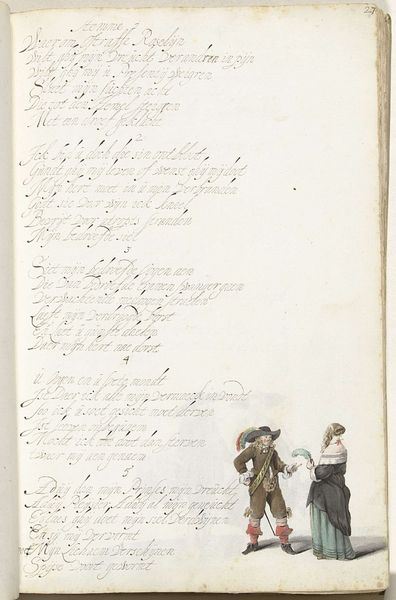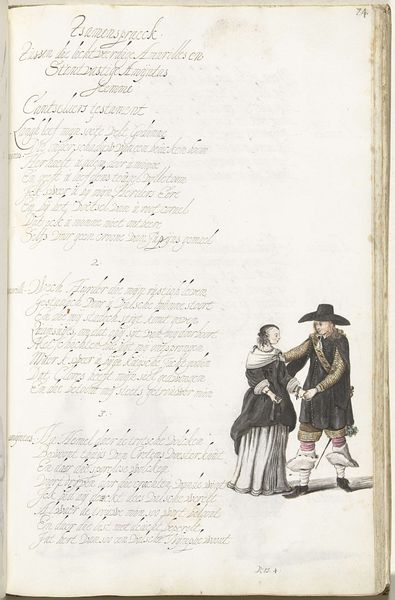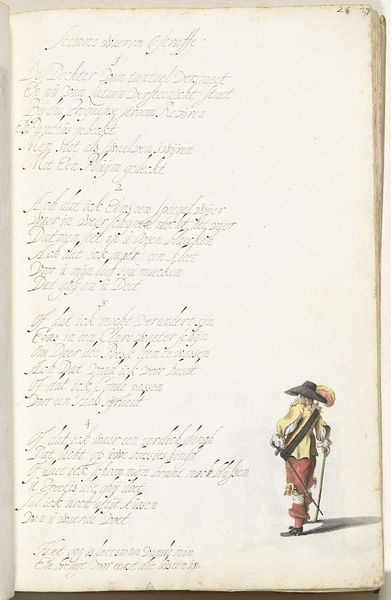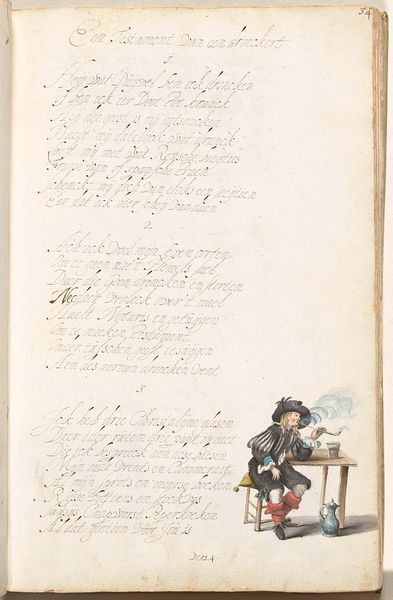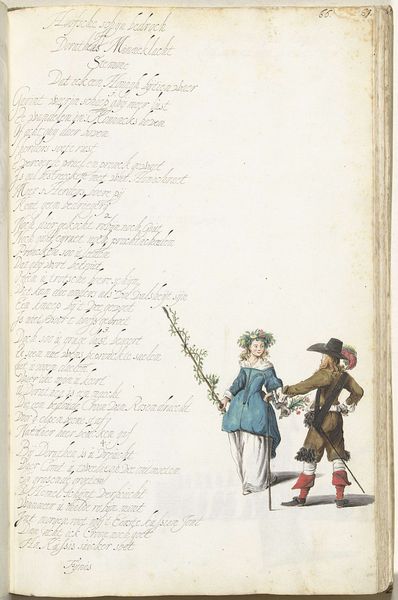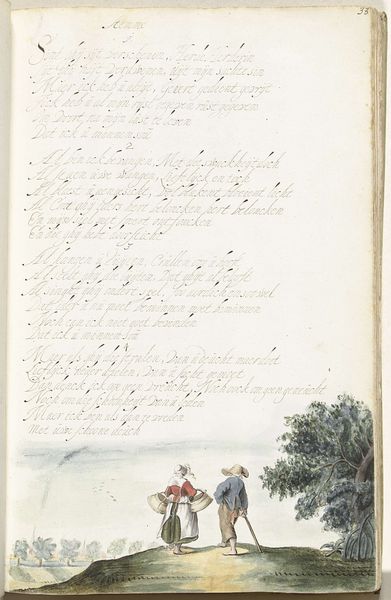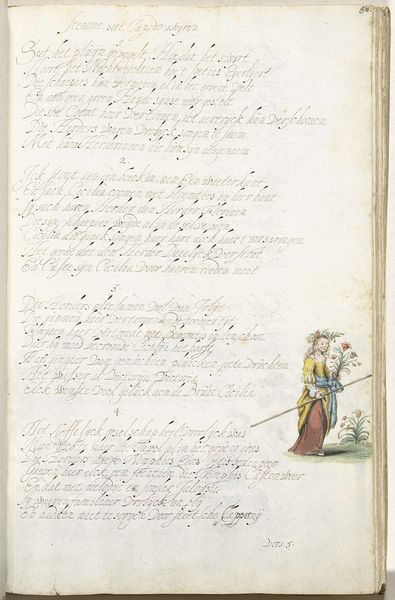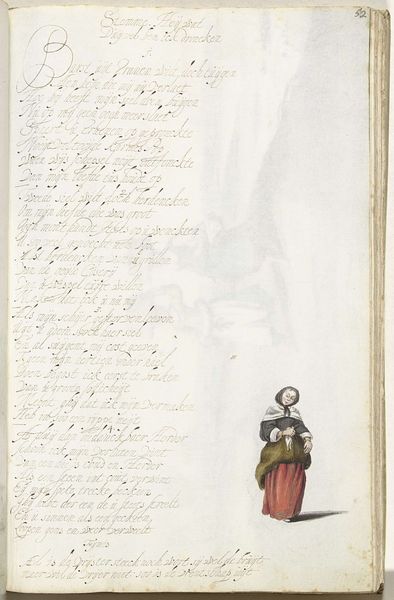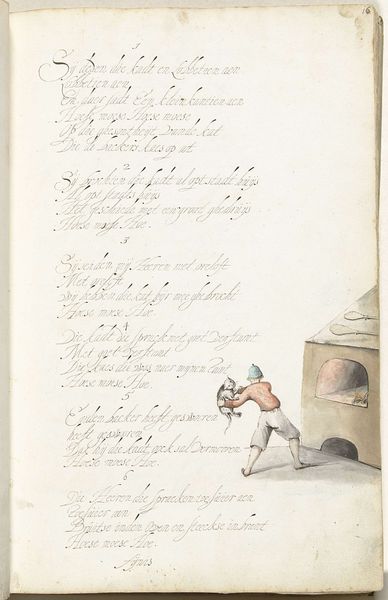
drawing, paper, watercolor, pen
#
portrait
#
drawing
#
narrative-art
#
dutch-golden-age
#
figuration
#
paper
#
watercolor
#
coloured pencil
#
folk-art
#
pen
#
genre-painting
Dimensions: height 313 mm, width 204 mm
Copyright: Rijks Museum: Open Domain
Gesina ter Borch created this watercolor drawing of a peasant couple in 1653. The woman, holding a dead fowl, and the man, with his basket, are not merely figures but carriers of deep-seated cultural symbols of labor and rural life. The motif of a peasant holding a fowl recurs throughout art history, from medieval tapestries to 17th-century Dutch paintings. It is a symbol of sustenance, sacrifice, and the cycle of life. This imagery appears as early as ancient Egyptian reliefs depicting offerings to the gods, and surfaces in classical Roman agricultural calendars. In each instance, the act of offering, giving, and consuming is deeply rooted in the human psyche. Consider how the act of presenting a fowl connects to deeply embedded notions of sacrifice and redemption. The visual language of sacrifice taps into primal emotional states, and the viewer is reminded of shared, often subconscious, understandings. We are connected to this image on a visceral level. These symbols are not static; they evolve and adapt as they traverse time. Their enduring presence reminds us that art is a continuous dialogue, a conversation between past and present.
Comments
No comments
Be the first to comment and join the conversation on the ultimate creative platform.
